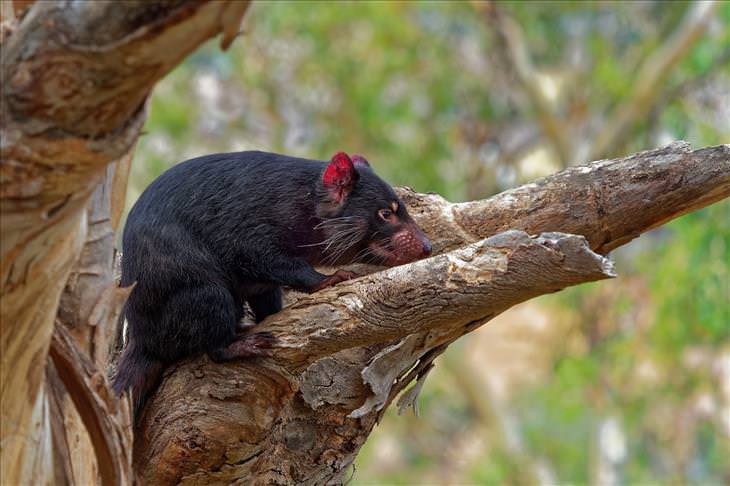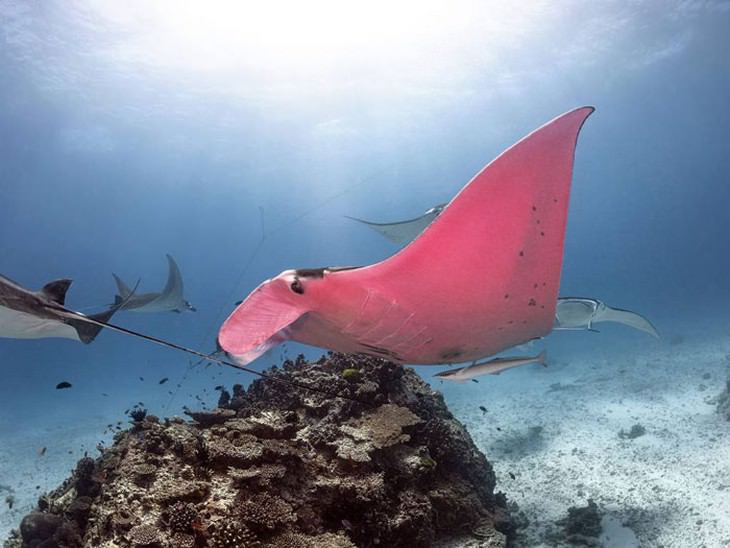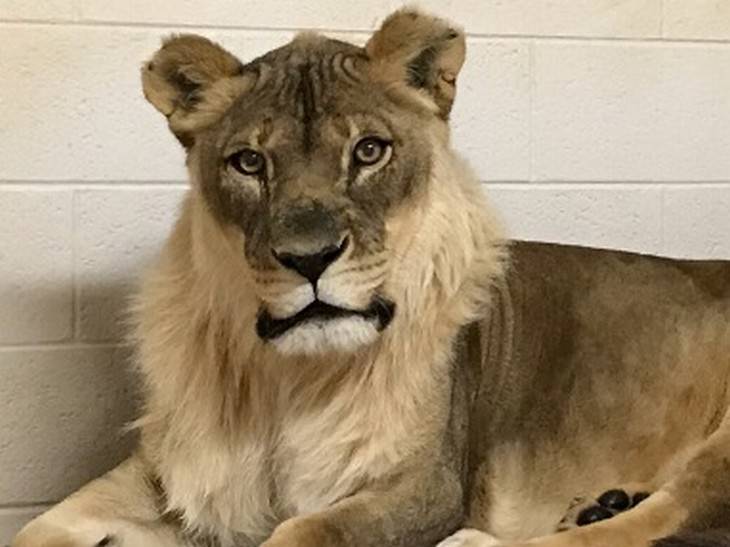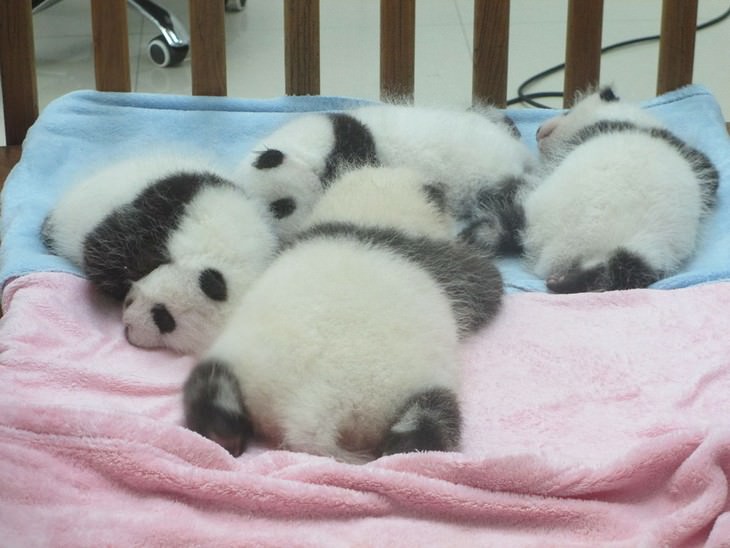

In 2019 the shelter Mac’s Mission in Missouri took in a stray dog. The puppy was about 10 weeks old and had a tail... growing out of his forehead. Appropriately, he was named Narwhal. Well, his full name is "Narwhal the Little Magical Furry Unicorn," according to the shelter’s website.
Cuteness aside, the puppy underwent tests to determine whether the appendage might cause him damage, which would mean an amputation would be needed. X-rays found no bones inside and that the whole "tail" was basically just skin. When the shelter learned the head-tail isn’t going to affect Narwhal’s wellbeing they decided to keep it.
The reason for this birth defect is a mystery. One possible explanation is that Narwhal absorbed his own identical twin. In humans, they are known as parasitic twins and appear as extra limbs or organs attached to the surviving sibling. This is unheard of in dogs since they rarely give birth to identical twins.

Tasmanian devils are an endangered species due to a disease that sadly wiped out 85% of their population. Called Devil Facial Tumor Disease (DFTD) is a highly contagious cancer that is transmitted between devils when they fight. Nine in 10 Tasmanian devils were killed in the first outbreak. Scientists and researchers were at a loss, they were not even sure if anything could be done. Despite the slim chances, they set out gathering information that meant little at the time but could prove useful someday.
Interestingly, a group of devils living in an area called West Pencil Pine seemed to be more resilient than the rest. Fewer individuals in West Pencil Pine got infected with DFTD and those with tumors lived longer than they should. Whatever it is that made those devils different was key to saving the whole species. Unfortunately, the genetic differences of the West Pencil Pine group were minuscule, and only deepened the mystery as to why they cope better with the disease. One speculation is that the less aggressive devils, who get involved in fights less frequently, might be more resilient thanks to natural selection.
3. The Pink Manta Ray

The ocean itself is one of the world’s biggest mysteries. The National Ocean Service states that more than 80 percent of our planet’s oceans are still unmapped, unobserved, and unexplored, which makes up about 361 million square kilometers (139 million square miles) of potential revelations.
One such unexpected sight was encountered by the underwater photographer Kristian Laine in early 2020. Laine was diving off the coast of Lady Elliot Island in Australia’s Great Barrier Reef, to take some pictures of the sea life around the area. When Laine was going over the photos he noticed one of the manta rays he captured was unusual - rather than a white belly, the sea dweller had a pink one. At first, Laine though his camera was faulty, but it turned out biologists were aware of the rare pink manta since 2015 and nicknamed it Inspector Clouseau after the quirky investigator from “The Pink Panther” movies.
Clouseau was seen fewer than 10 times. A skin sample test showed that his unique color is probably due to a genetic mutation. Clouseau measures 3.3 meters (11 feet) long. This is a survival feat on its own, considering that mantas are black and white to avoid predators and stalk prey.

In 2017, zookeepers at the Oklahoma Zoo Noticed something strange about Bridget, an 18-year-old captive lioness. After looking completely normal for most of her life, Bridget suddenly started growing a mane. The veterinarians were baffled. As we all know, only male lions are supposed to have manes. Bridget was on the same diet as the rest of the lions, and didn’t take any unusual medication that might have side effects, so where did her mane come from?
At first, it was speculated the lioness had a deformity in her ovaries which released the male hormone testosterone. But this possibility was soon ruled out after blood tests showed Bridget had the same testosterone levels as her sister Tia. But eventually, those very tests did reveal the source of the mane - significantly elevated levels of two other hormones: cortisol and androstenedione.
The latter is a precursor of sex hormones including testosterone, meaning it can be responsible for producing male traits — such as beards or, for lions, manes. The next question was: why? The experts believe that the hormones are produced by a small benign tumor that may have developed on the eternal gland, causing the erratic hormone production. Luckily, other than the fabulous lady mane, the tumor didn’t cause any shifts or health problems in Bridget’s life.
Related: Better Together: Animals Who Collaborate in the Wild

For an unclear reason, Panda mothers cannot seem to complete a pregnancy. Panda cubs are known to be bizarrely tiny; they are born after only four weeks in the womb when they are about 900 times smaller than the mother. The leading theory as to why the pregnancies of these giant animals are so short was that it’s a result of an evolutionary leftover. Like all bear species, pandas used to shorten their pregnancies to avoid gestation during hibernation. While modern-day pandas no longer hibernate, it explains why they are pregnant for only four weeks. Perhaps, this was just enough time for small-sized cubs to develop fully.
A study conducted at the Washington DC zoo in the 1980s attempted to find an answer to the question of why panda pregnancies are so unusual. A litter of newborn panda cubs was scanned and compared to other newborn bear species. The bones of the pandas, born at the usual four weeks, were so underdeveloped that they were comparable to a 7-month-old human fetus. Unlike them, the other bear cubs were born with a robust, fully developed skeleton with no significant differences based on whether the species hibernates. "They're basically undercooked," Peishu Li, the lead study author, said in a statement. The reason for that, however, is not clear to this day.
In 2016, the Max Planck primatologists recorded chimpanzees from four wild populations in West Africa hooting excitedly and then throwing a single rock at the wide base of a large tree before running off. There was a sense this was some cultural ritual the chimps were following. No one could understand the reason for this practice. Stones had piled up at the bases of the regularly used tree-drums, and not just any tree but a specific type of tree; they returned to the same species time and again.
Researches presumed the chimpanzees might be sending signals to each other, or using the trees and rocks as a kind of musical instrument. Maybe something about the wood’s qualities and the sound it produced made the chimps happy. Despite efforts, there is no conclusive answer. For now, the two-step ritual remains a mystery.